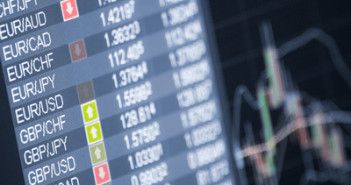The Nikkei exchange is up nearly 8% today with the yen declining as capital moves into riskier assets while a surge of bullishness grips global markets ahead of this month’s Federal Reserve rate announcement. Traders have made a clear bet that policymakers operating globally will continue to maintain the current period of low rates and expanded stimulus. Supporting this argument was an announcement by China’s Ministry of Finance last night that it will continue with more proactive fiscal policy in the face of a broad-based deterioration in the Chinese economy. This news, along with the perception that other policy makers will follow suit with continued monetary stimulus had the S&P 500 up 2.5% yesterday which largely set the stage for today’s remarkable rally in Asia and Europe. Responding to the exuberance in Northern Asia, we have also seen a return to strength in the markets and currencies of Australia and New Zealand as the risk on surge has propped the value of industrial commodities and the currencies of the exporters of the same.
Moving to Europe, we see much of the same as the FTSE Eurofirst index is up nearly 2% as the exuberance first felt in Asia permeates markets. In contrast, after a slew of poor economic reports the sterling has gone soft, trading weaker versus both the greenback and euro. This move has been driven by an unexpected decline in manufacturing and industrial production along with a larger than expected fall in Britain’s trade balance as the value of goods exported hit their lowest since September 2010. Moving onto the continent, Mario Draghi’s earlier moves to assure market participants of continued accommodation on the part of the ECB has contributed to this latest round of exuberance and is also partly to blame for today’s weaker euro as market participants opt to shift capital to higher yielding assets, with the euro weaker against its North American counterparts as a result.
Prior to the opening bell, markets stateside are set to repeat the moves in Asia and Europe with S&P 500 futures trading stronger. A large part of the current exuberance can be put down to market expectations that have shifted to presume that the Federal Reserve will head warnings from the IMF and World Bank heads and delay their shift to higher interest rates until later in the year. With global capital markets that have been buffeted by the unrest in China and widespread volatility elsewhere, the perception is that the timing is not right for the Federal Reserve to move towards rate lift-off at its next meeting later this month. Outside of the Fed, the Bank of Canada will be making its rate decision today, with parts of its economy devastated due to the sharp decline in oil, the employment, consumer confidence and inflation picture in Canada has not been bright. These developments have led to two largely unexpected rate cuts on the part of the Bank of Canada which have contributed to a sharp decline in the value of the CAD versus the greenback, sterling and euro since the beginning of the year. With this back drop in mind, market participants do not expect another rate cut at this point from the BoC. However, given the last two surprises and the continued sluggishness in the Canadian economy, today will almost certainly be a volatile one for the loonie no matter what direction policy makers chose to take.
Further reading:
Goldman Sachs sees no rate hike in September
Federal Reserve rate announcement



